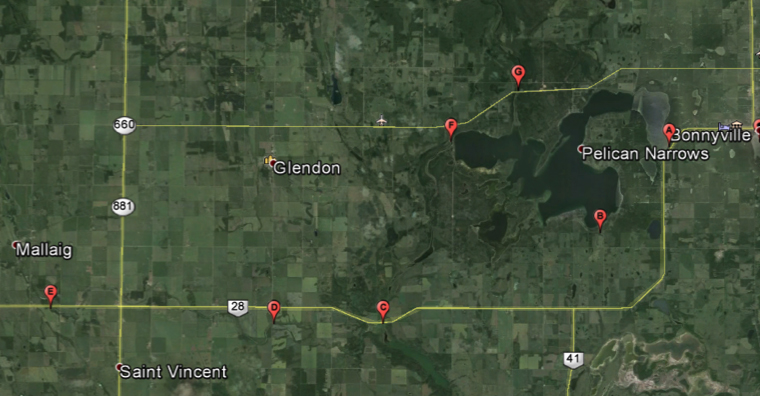Tributary Water Testing
Tributary Monitoring 2017-2019
Tributary water testing and monitoring of Moose Lake continued in 2017-2019, with plans to continue monitoring into 2020. The sites were tested from April until October, but varied year to year due to seasonal conditions.
Phosphorous is one of the main driving forces of algae blooms in water bodies. Phosphorous can be in high concentrations due to fertile soils, but can be compounded in the environment by fertilizer use, septic leaks, chemicals and soil erosion. Nitrogen is also needed for plant growth, but generally limits terrestrial plants versus aquatic species that are much more dependent on phosphorous. High amounts of these nutrient lead to algal blooms and cyanobacterial blooms in our water bodies. These can have detrimental effects on fish populations as the blooms increase water temperature, decrease dissolved oxygen content and increase turbidity. Cyanobacteria (blue-green algae) can also be toxic to humans and wildlife which can cause skin irritation to liver damage to even death within a short period after consumption.
View Moose Lake 2017-2019 Tributary Monitoring Results
Prior Tributary Water Testing & Monitoring
In 2013 the Moose Lake Watershed Society received a Community Initiatives Program grant from the Alberta Government. Riparian areas are portions of the landscape influenced by water along creeks, lakes and wetlands. When properly functioning, these zones are the most ecologically diverse and sustain both fish and wildlife. They provide good water quality and support people on the landscape. The intent of the Riparian Health Inventory is to provide a state of the environment report to the local community. Cows and Fish will continue with the baseline study that was conducted in 2004. By comparing the results from these two Riparian Inventory studies we will be able to produce up to date data and information to the general public.
Water sampling was conducted by LARA on the tributaries of Moose Lake which included Thinlake River (two sites), Yelling Creek, Vincent Creek and two smaller unnamed creeks. This sampling will be analyzed for routine chemistry and fecal matter.
Time 1 samples were collected on June 24, 2013
Time 2 samples were collected on September 30, 2013
To view total fecal coliforms findings, click here.
To view routine chemical findings, click here.
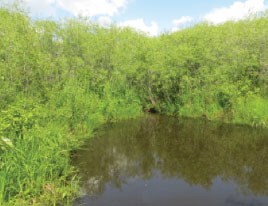
Site A is near Shaw House (Vincent Creek)
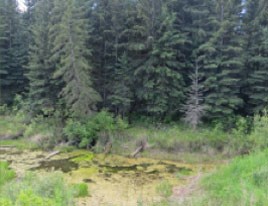
Site B is near Wood Creek (unnamed creek)
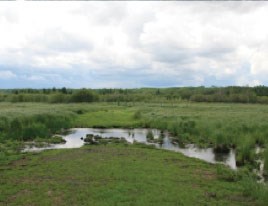
Site C is Thinlake River near Kennedy Flats
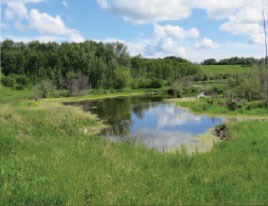
Site D is Yelling Creek near Beacon Corner
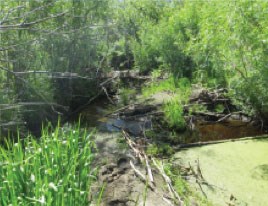
Site E is headwaters of Yelling Creek, near Mallaig

Site F is Thinlake River near Franchere Bay
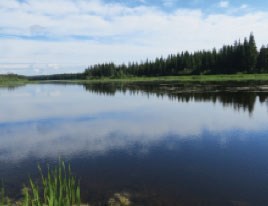
Site G is Mooselake River (outlet of Moose Lake)
From sampling in June to October, the total number of coliforms on average decreased significantly. However the number of fecal coliforms increased greatly. An interesting occurrence at site A, which does not have a large agricultural influence, has the highest number of fecal coliforms. In future it would be interesting to DNA sample to see if it is human caused contamination.
- Surface waters in this region usually have a pH around 8 due to parent soil materials.
- Total Dissolved Solids (TDS) is a measure of particles that are greater than 2 microns. Conductivity can be used to measure TDS. The aesthetic objective of TDS for human consumption is less than 500mg/L, but most groundwater TDS is around 1000 mg/L. High levels of TDS are associated with hardness, mineral deposition, corrosion and poor taste. Calcium and magnesium contribute to the hardness of the water. Soft water ranges from 0-50 mg/L, moderately soft from 50-100 mg/L, moderately hard from 100-200 mg/L, hard from 200-400 mg/L, and very hard from 400-600 mg/L.
- Of the routine samples, Manganese exceeded the recommended guidelines. Manganese has a large effect on aesthetics of the water. Higher values increase discoloration, odour and taste of the water and will decrease the amount of water consumed which also decreases the productivity of the livestock.
View Moose Lake Watershed Society Tributary Monitoring charts and preliminary results.
Figure 1. Map of sites sampled in the Moose Lake watershed
